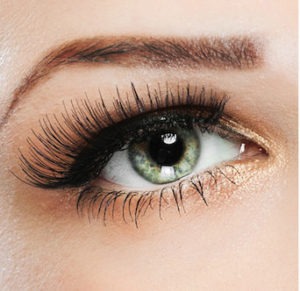 If you have recently undergone a blepharoplasty (eyelid surgery) and are now wondering when it is safe to return to work, this blog post is for you. Here, we will explore what to expect after having eyelid surgery and provide tips and advice on how to prepare for returning to work. By the end of this post, you should have a better understanding of when it is safe to return to work after having eyelid surgery. Khan Eyelid and Facial Aesthetics, led by oculoplastic and reconstructive surgeon Dr. Tanya Khan, provides eyelid surgery to patients in Plano, Dallas, Austin, Texas, and surrounding locations.
If you have recently undergone a blepharoplasty (eyelid surgery) and are now wondering when it is safe to return to work, this blog post is for you. Here, we will explore what to expect after having eyelid surgery and provide tips and advice on how to prepare for returning to work. By the end of this post, you should have a better understanding of when it is safe to return to work after having eyelid surgery. Khan Eyelid and Facial Aesthetics, led by oculoplastic and reconstructive surgeon Dr. Tanya Khan, provides eyelid surgery to patients in Plano, Dallas, Austin, Texas, and surrounding locations.
Understanding Eyelid Surgery
Eyelid surgery, also known as blepharoplasty, is a cosmetic procedure that involves removing excess skin, fat, and muscle from the eyelids. This surgery can be performed on the upper or lower eyelids, or both, depending on the patient’s needs.
Upper eyelid surgery is usually done to address droopy or sagging eyelids that may be impairing vision. Lower eyelid surgery can help reduce the appearance of under-eye bags, wrinkles, and dark circles.
Eyelid surgery is usually performed under local anesthesia, and the procedure can take up to two hours. Recovery time varies from patient to patient, but most people can expect to see noticeable results within a week or two.
It is important to note that eyelid surgery is a medical procedure, and it should not be taken lightly. It is essential to find a reputable and experienced surgeon to perform the procedure to minimize any risks or complications.
Before considering eyelid surgery, it is recommended that you consult with a qualified cosmetic surgeon to discuss the procedure’s potential risks, benefits, and any concerns you may have.
Recovery Timeline
When it comes to any type of surgery, including eyelid surgery, it is important to give yourself enough time to fully recover. Every person’s recovery time may vary, but here is a general timeline of what to expect after your eyelid surgery:
First 24-48 hours:
After your surgery, you may experience some swelling and bruising around the eyes. It is important to keep your head elevated as much as possible to reduce swelling. You may also have some discomfort or mild pain, which can be managed with prescribed pain medication.
During this time, you should start to feel more comfortable and the swelling and bruising should start to subside. You may still have some bruising, but it should become less noticeable. It is important to continue taking any prescribed medication as directed and avoiding any strenuous activities.
At this point, most of the swelling should be gone and you can start to return to your normal activities. You may still have some minor bruising or swelling, but it should continue to improve. You should continue to avoid any activities that could put strain on your eyes.
Week 4 and beyond:
At this point, most people feel fully recovered and are ready to resume all of their normal activities, including work. You may still have some residual swelling or bruising, but it should be minimal.
It is important to note that everyone’s recovery timeline may be slightly different, so it is important to follow your surgeon’s specific post-operative instructions and attend any follow-up appointments to ensure that you are healing properly. By following your surgeon’s guidelines, you can ensure a safe and speedy recovery, and get back to your daily routine as soon as possible.
Post-Operative Care
After eyelid surgery, it is essential to follow post-operative care instructions provided by your surgeon. These instructions are crucial for a successful recovery and to avoid complications. Here are some general post-operative care tips to keep in mind:
- Apply cold compresses: Applying a cold compress to your eyes can help reduce swelling and bruising. You can use a soft cloth or a bag of frozen peas. Make sure to wrap the compress in a clean cloth before applying it to your eyes.
- Take medication: Your surgeon may prescribe pain medication or antibiotics to help manage any discomfort and prevent infections. Be sure to take your medication as prescribed.
- Rest and relax: It is essential to take it easy after surgery and avoid any strenuous activities or lifting heavy objects for a few days. Resting and relaxing will help speed up your recovery.
- Keep your head elevated: Sleeping with your head elevated can help reduce swelling and promote healing. Use extra pillows to keep your head raised while sleeping.
- Avoid smoking and alcohol: Smoking and alcohol can interfere with your healing process and increase the risk of complications. Avoid smoking and drinking alcohol for at least a week after surgery.
- Keep your eyes clean: Your surgeon will provide you with instructions on how to clean your eyes after surgery. Make sure to follow these instructions to keep your eyes clean and prevent infections.
By following these post-operative care tips, you can ensure a smooth recovery and return to work as soon as possible. If you experience any complications or have any questions about your recovery, contact your surgeon right away.
Returning to Work
After eyelid surgery, most patients can return to work within one to two weeks. However, this timeline can vary depending on the extent of the procedure and the type of work you do. For example, if your job requires a lot of physical activity or heavy lifting, you may need to wait a bit longer before returning to work.
Before returning to work, it’s important to ensure that you are fully healed and have clearance from your surgeon. This includes ensuring that your incisions have fully healed, and any swelling and bruising has subsided. You may also need to attend a follow-up appointment with your surgeon to ensure that everything is healing as it should.
When you do return to work, it’s important to take it easy and avoid any strenuous activities. You should also avoid rubbing your eyes or wearing makeup until you are fully healed. Depending on your job, you may need to take extra precautions such as wearing protective eyewear or avoiding certain tasks.
If you work in a customer-facing role, you may be self-conscious about any residual bruising or swelling. However, most people are able to conceal these with makeup or clothing accessories such as sunglasses.
In summary, returning to work after eyelid surgery is typically a straightforward process, as long as you follow your surgeon’s post-operative instructions and allow yourself enough time to fully heal. By taking the necessary precautions, you can ensure a smooth transition back to work and enjoy the benefits of your eyelid surgery for years to come.
Contact Khan Eyelid and Facial Aesthetics and Oculoplastic & Reconstructive Surgeon Dr. Tanya Khan Today to Schedule an Appointment
For more information about procedures and treatments at Khan Eyelid and Facial Aesthetics by Ophthalmic surgeon Dr. Tanya Khan. Click here to contact us.
Taking patients from in and around Dallas, Plano, Fort Worth, Grapevine, Garland, Mesquite, Carrollton, Irving, Frisco, Texas and more.









Schedule a Consultation: 972-EYE-LIDS (393-5437)